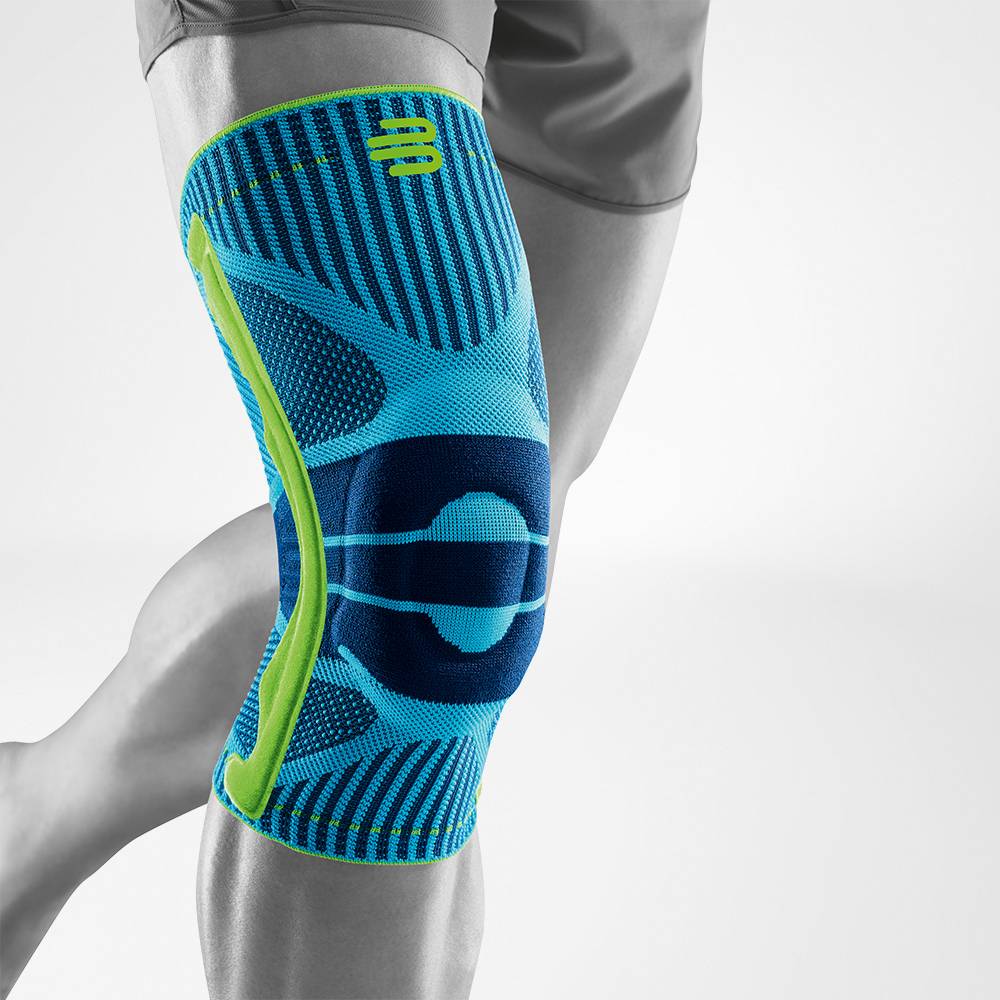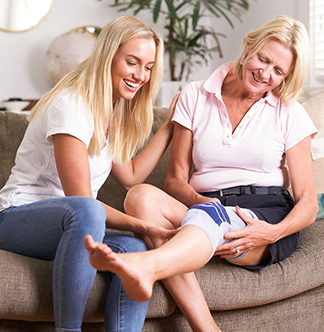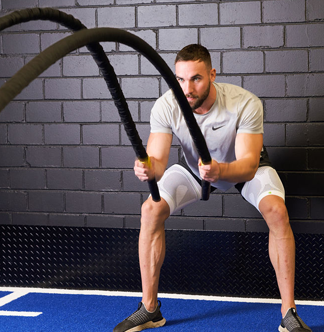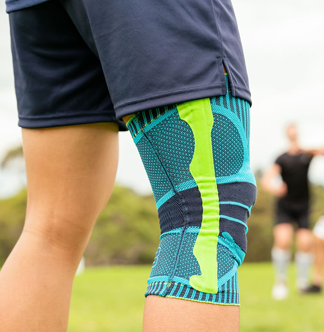Improve endurance
You need a good amount of muscle endurance to perform at your best for 2 40-minute stretches. Of course, endurance training and eating complex carbs are essential here. But it’s still beneficial to add a compression rugby knee brace to the mix.
Your heart can pretty easily get blood into muscle tissues. But rugby is a high-intensity, highly strenuous sport - so after a while, your veins start having trouble keeping up (this is what causes veins to bulge during strenuous activity). If the veins can’t cycle blood and cellular waste out fast enough, your arteries can’t cycle in oxygen and nutrient-rich blood at the rate your muscles demand, resulting in fatigue.
Compression braces like our Sports Knee Support help by squeezing all that built-up deoxygenated blood out of small surface veins and into the deep veins, which carry it to the heart. It also activates your muscles, helping them better pump blood up along the deep vein.
As a result, you get better circulation and less fatigue as your muscles have everything they need to work harder and last longer.
As a bonus, compression knit also improves proprioception (how well and quickly the nerves in your tissues send signals to and from the brain). So essentially, they’ll help your muscles work more efficiently as you play or train.
Sports Knee Support
Speed up muscle recovery
A rugby knee brace can also boost muscle recovery thanks to its muscle activation and circulation-boosting properties. During rugby training and matches, overloaded muscles start developing micro-tears. When they heal, they do so in such a way that the healed tissue becomes stronger than the muscle that was there before. The healing process can be lengthy and often uncomfortable as Delayed Onset Muscle Soreness sets in.
A knee brace helps speed up recovery in two ways.
- It keeps oxygen and nutrients flowing into the muscle to kick-start the repair process.
- It also reduces muscle oscillation - the uncomfortable vibrations that shoot up your leg when your feet hit the ground. Oscillation can result in microtrauma to the muscle tissue. So, the less there is, the quicker your muscles can bounce back.
- As a bonus, some research shows that wearing compression knit can also reduce the severity of DOMS.
But. Faster muscle recovery doesn’t mean you can just keep training without a break. Your muscles will still need around 24-48 hours to heal and strengthen, with some experts recommending as many as 72. Working recovering muscles again too soon can lead to tissue breakdown.
Reduced risk of injury
The knee is one of the most commonly injured joints in rugby. It’s prone to overuse injuries like patellar tendonitis and ITBS, acute soft-tissue injuries like ligament sprains and meniscus tears, and full-on fractures.
Now, a knee brace isn’t likely to do much against a force strong enough to break a bone. But a knee brace can help reduce your risk of sprains and strains. A brace like our Sports Knee Support does so in a few key ways.
- It boosts blood flow to prep your muscles and tendons for exercise, warming them up, improving flexibility, and thus making them less prone to pulling and strain injuries.
- It reduces the rate of muscle fatigue. Tendon overuse injuries like patellar tendonitis happen when the muscles quit, and the tendons kick in to compensate. The more strain on the tendon, the more likely it is to tear and inflame.
- It improves proprioception, which means improved stability. Your muscles act as better supports for your joints, helping to take unnecessary pressure and tension away from ligaments, tendons, and even cartilage.
- It stabilises the patella. The viscoelastic pad sewn into the Sports Knee Support targets the kneecap, supporting it through movement and helping you avoid overuse injuries like patellofemoral pain and patellar tendonitis.
Protection after injury
Of course, your doctor probably won’t let you back onto the field a few days after a ligament tear. They’re liable to advise a few days of RICE (rest, ice, compression, and elevation) even after more minor injuries like tendonitis to prevent the condition from worsening.
But thanks to added support, boosted circulation, and improved proprioception, a knee brace can help you get back into training and playing once you’re cleared - with less risk of re-injury.
To sum up
Rugby can take a lot out of your knee, so supporting it with a rugby knee brace is important. A quality compression brace will help reduce your risk of soft tissue injuries, support you after injury, speed up recovery, and even boost your endurance.
Check out more rugby supports: Rugby Support.




















